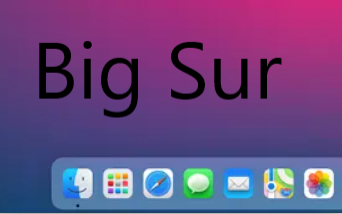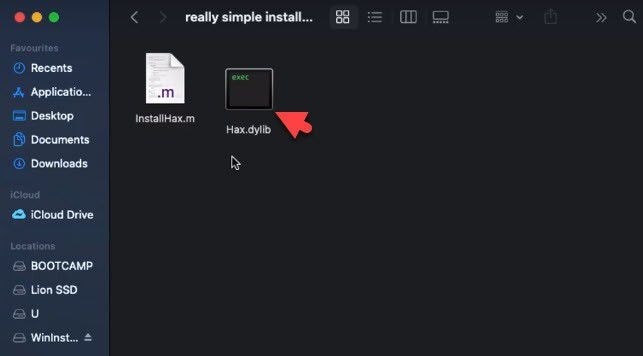Download link: How To Install MacOS Big Sur 11 On An Unsupported Mac, IMac, Mac Pro Or Mac Mini In 2021.mp3
Install macOS Big Sur on incompatible Macs Is your Mac computer NOT compatible with the new macOS Big Sur operating system? Do you want to download and install macOS Big Sur even on those Macs that. A: If your Mac had official support in macOS Catalina, it will be able to be patched to run Big Sur with minimal issues. If your Mac was unsupported before the release of macOS Catalina, support.
Download Mp3 Video free
Today I will show you how to Install macOS 11 Big Sur on an Unsupported Mac.
To be clear this guide shows you how to install Mac OS Big Sur, it is up to you to backup your data first and use Big Sur at your own risk, I am not responsible for any loss of data etc...For me as you can see I installed Big Sur and it worked for me, however due to unforeseen circumstances I can't help with all install steps if it doesn't work out for you. I also can't support or guide you on the use of additional Apps you may install like for example Office (word, powerpoint, excel), Final Cut Pro, Photoshop etc... they may work - they may not. However do help others in the comments if you get Apps to work what other are struggling with.
Please make sure your Mac is Compatible here;
https://bensova.gitbook.io/big-sur/supported-macs
Using Patched Sur Patcher; I have successfully installed MacOS Big Sur 11 onto a 2012 MacBook Pro and you can to on your Intel Mac!
You will need a USB stick and a copy of MacOS Big Sur 2020 and the patcher.
The USB stick I have used and works with MacOS Big Sur is this one;
UK - https://amzn.to/2UKD7EW
You can download this from Patched Sur website;
https://github.com/BenSova/Patched-Sur
0:00 Intro
0:20 DO NOT SKIP - Unsupported Macs with Big Sur
2:51 Install Part 1 - USB Setup
11:20 Install Part 2 - Installation
15:20 Install Necessary Patches for your Mac
We all know by now that macOS Big Sur is the latest and greatest version of Apple’s Mac operating system. It was released in November 2020 and offered some serious advancements, especially on the visual side. If you have an older machine, though, you may be wondering whether your Mac is compatible. Let’s shed some light on macOS Big Sur system requirements and help you check whether your Mac supports the new OS.
Before you attempt to upgrade to Big Sur
- Use Patched Sur to install macOS Big Sur on unsupported Macs To get started, make sure that you have a 16GB USB drive with no important data on it. This will be used to create a bootable macOS Big.
- Install macOS High Sierra on unsupported Mac. Also, Mac models’ owners officially supported by the macOS High Sierra operating system may face the fact that installing the system imposes a new APFS file system, which may be undesirable for the user for various reasons.
- For iperf testing, follow the steps below: Install/download iPerf 3 on one Ethernet-capable computer without the ASIX adapter. Set Ethernet port with a manual IPv4 address IP: 10.10.10.10 - Subnet: 255.0.0.0. Connect the server host via Ethernet the the ASIX adapter that is connected on the Client macOS Big Sur host.
There are a couple of things you should do before you upgrade to Big Sur.
- Back up your Mac.
It doesn’t matter whether you use Time Machine or a third-party backup tool, just make sure you backup your Mac immediately before you upgrade.
- Free up some space for the new OS
To get macOS Big Sur running on your Mac, you need at least 20GB of free space. So, if you aren’t sure you have enough, here’s how to check it. Click the Apple menu and select About This Mac. Go to the Storage tab to let your Mac calculate the amount of free space. If you don’t have enough, you can try removing some old junk with CleanMyMac X. This app detects ancient cache, user log files, and other clutter and helps you delete it from your Mac.
- Download the free version of CleanMyMac X and install it, then launch.
- Press Scan.
- Click Run.
That’s all there is to it. I managed to clear 10GB in just a couple of minutes, which saved me hours I would have spent if I were to do it manually.
macOS Big Sur requirements
Here’s the list of macOS Big Sur supported Macs:

Mac Os Big Sur Unsupported Mac Github
- Any Mac Pro or iMac Pro
- MacBook Pro and MacBook Air 2013 and later
- iMac and Mac mini 2014 and later
- MacBook 2015 and later
As you can see, some Macs released as long ago as 2013 can officially run Big Sur. That’s pretty good considering the number of macOS updates there have been since then and the new features they have introduced.

Mac Os Big Sur On Unsupported Mac Os
Sadly, a few machines that were supported to upgrade to Catalina have fallen off the list for Big Sur, notably the 2012 MacBook Pro, MacBook Air, and iMac.
Mac Os Big Sur Old Macbook Air
Mac models that do crash

Immediately after Big Sur's release on November 13, 2020, Mac users started reporting system failures that appeared to affect MacBooks from 2013-2014. The attempted installation resulted in 'bricking some older MacBook Pro models,' according to MacRumors. Notably, those MacBooks are the oldest still supported Macs that can run Big Sur. So if your MacBook belongs to that generation, we advice you to do little research on this before you rush to install Big Sur.
macOS Big Sur compatibility
If your Mac’s model is on the list of “officially supported” Macs to run Big Sur, you will definitely be able to upgrade it to the latest OS. You can be sure the installer will run on your Mac and that if you run into trouble, you can expect help from Apple, either in the form of support documentation or an update to the OS.
But, if your Mac is slightly older and isn’t on the list, there is a possibility you can still update it to Big Sur. Several Mac users have had some success installing the Big Sur beta on Macs that aren’t on Apple’s list. It requires a workaround, and there’s no guarantee that it will continue to work when the final version of Big Sur is released or when updates are issued. But, if you’re determined to install Big Sur on an older Mac, or you want to try it as a fun project, it’s an option.
Things to consider before you try to install Big Sur on an unsupported Mac
Installing macOS Big Sur on a Mac that’s not on Apple’s official list of unsupported Macs isn’t as straightforward as just downloading the installer and running it. How you install it will depend on the Mac you’re trying to install it on, and we’ll come to that later in the article. But there are other things you need to consider.
- Your Mac may not run at all afterwards.
Mac Os Catalina
If you get the installation process wrong or something just doesn’t work as it should, you could be left with a Mac that doesn’t boot. For that reason, you should make a bootable clone of your startup drive before you start.
- Even if your Mac boots, parts of it won’t work
Upgrade Unsupported Mac
Among those users who successfully installed the beta version of Big Sur on unsupported Macs, most reported that either the graphics system (GPU) didn’t work or that Wi-Fi didn’t work. You can get around the wifi issue by replacing the internal Wi-Fi card or using a USB Wi-Fi adaptor, but you can’t replace the GPU.
- There’s no guarantee updates will work
Just as you can’t use the regular installer to install Big Sur on an unsupported Mac, you won’t be able to install updates using Software Update. That could leave you vulnerable to security flaws.
How to upgrade to Big Sur on an unsupported Mac
Installing Catalina On Unsupported Mac
As we said earlier, the specifics of how you install Big Sur on an older Mac vary according to the Mac, but there are lots of success stories in this thread.
One example is the user who installed the Big Sur beta on a 2012 15in MacBook Pro, and it ran well apart from Wi-Fi not working. That user got around the problem by using an iPhone as a hotspot (you can use Personal Hotspot by connecting to an iPhone via Bluetooth or USB). Another user reported installing Big Sur on a 2012 Mac mini, but with sound and Wi-Fi not working.
Mac Os Big Sur Download
The question of whether or not your Mac is compatible with macOS Big Sur can’t be answered just by looking at Apple’s list of supported Macs. Those are the machines on which Apple has decided to support installation, but there are others on which Big Sur will run, albeit with a bit of extra work. You should decide for yourself whether you want to take risks associated with installing Big Sur on an unsupported Mac. And, if you decide to go ahead, be sure to back up your Mac and clean it up using Mac maintenance software like CleanMyMac X.